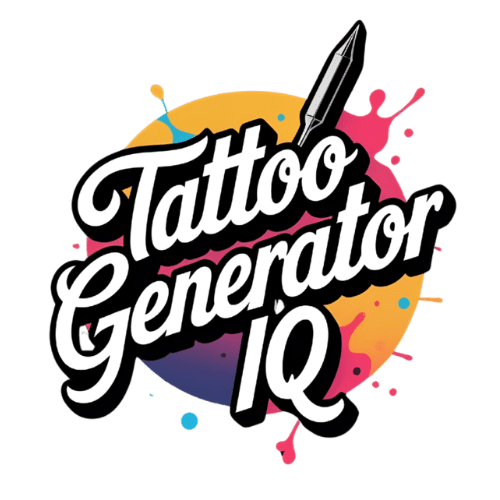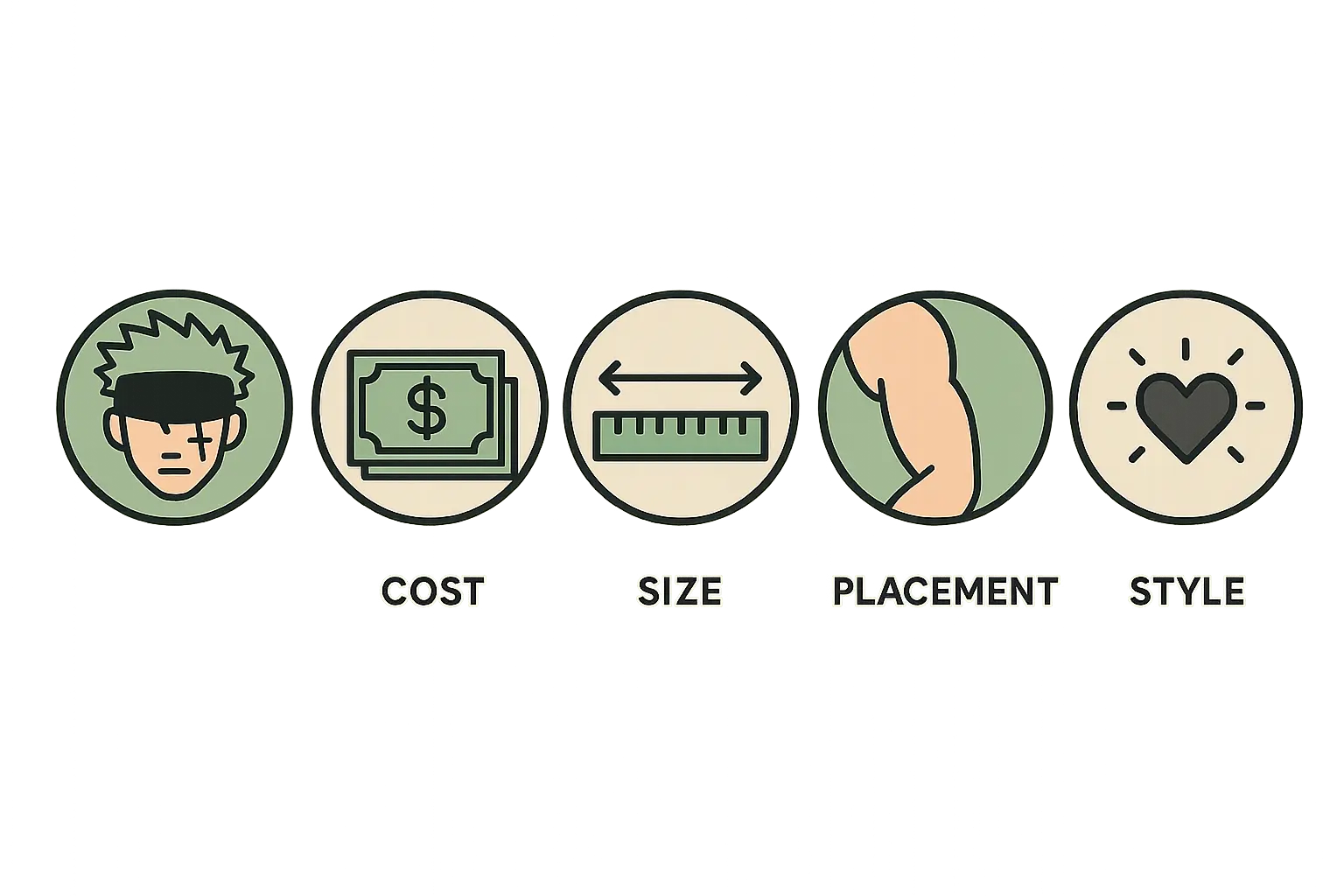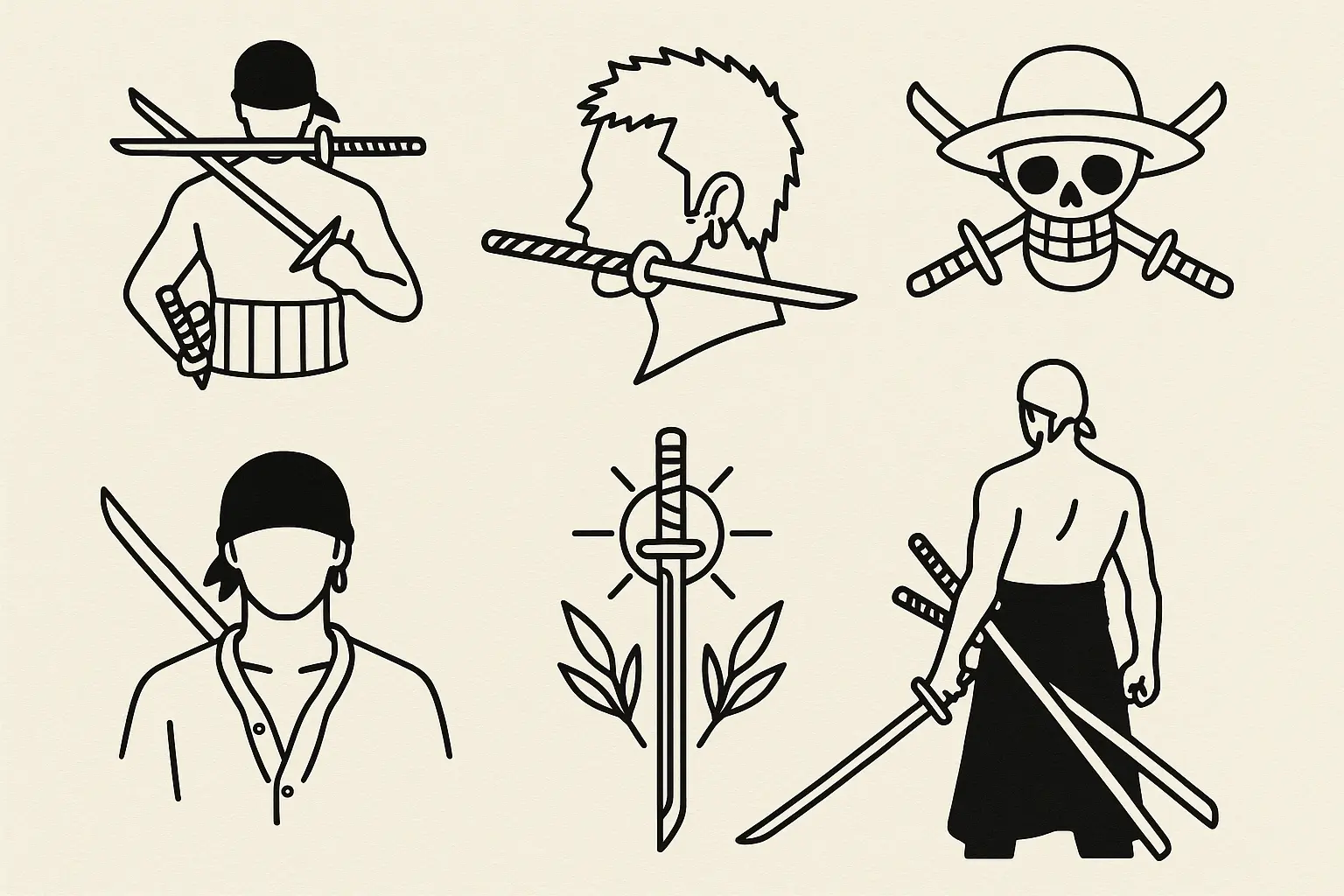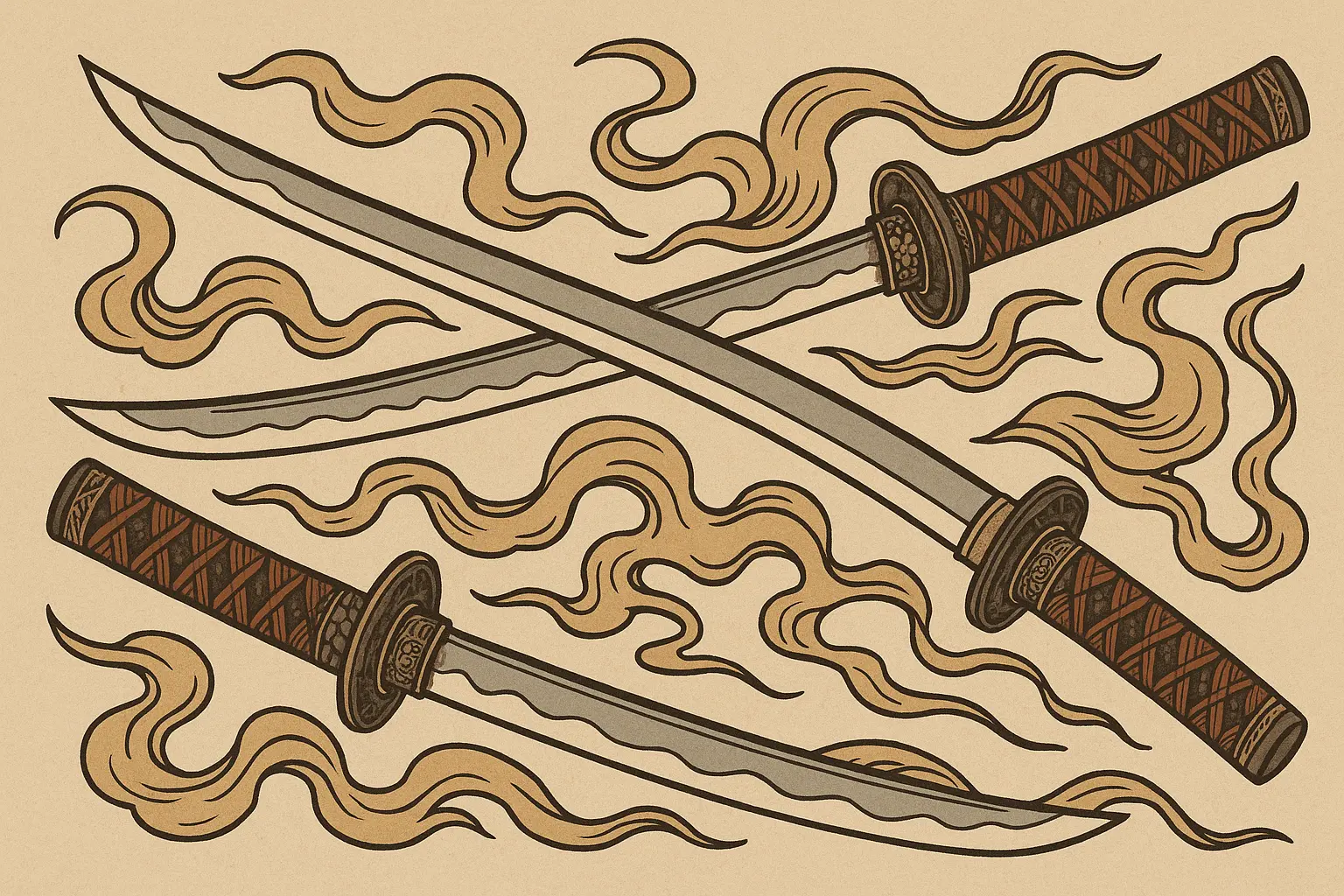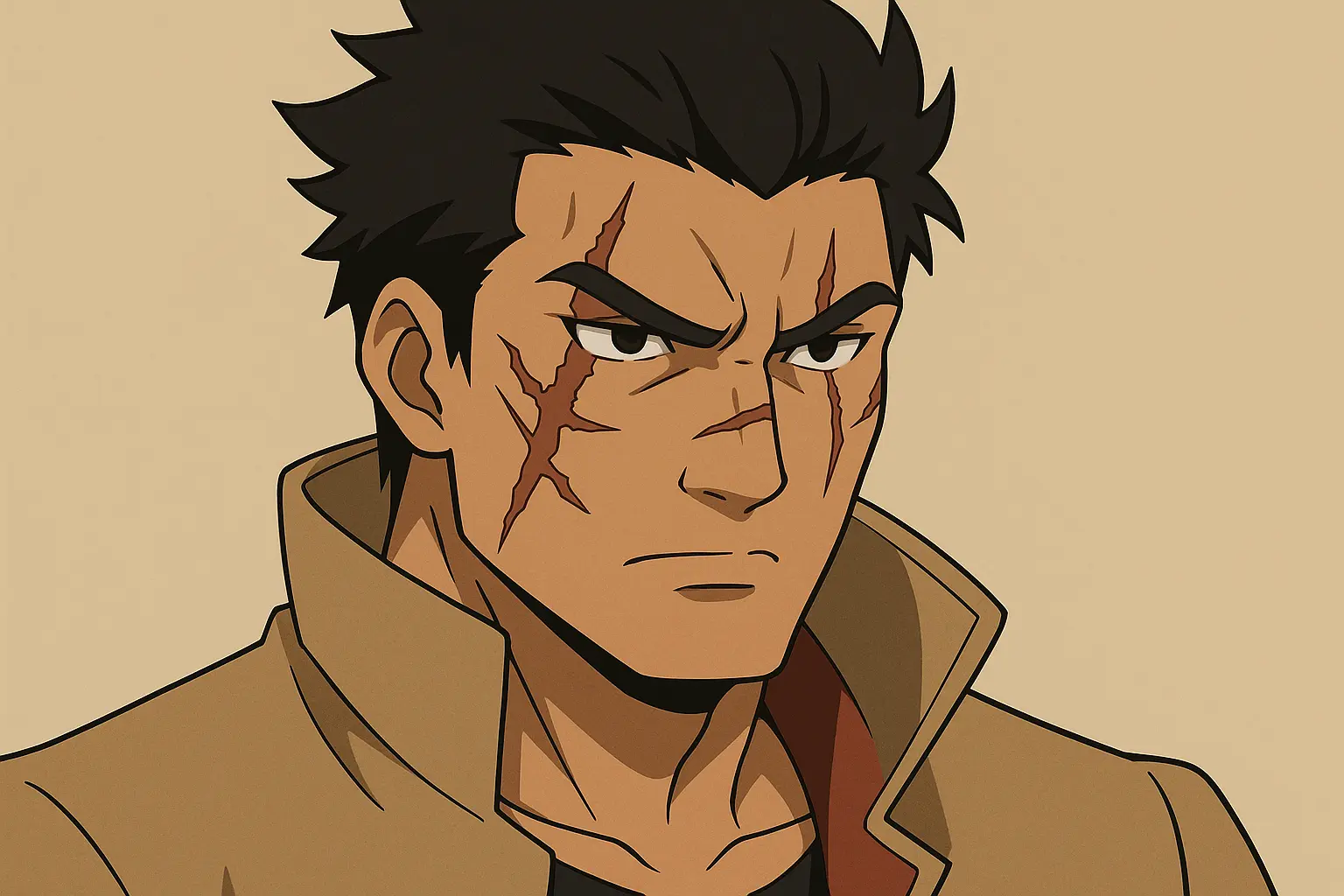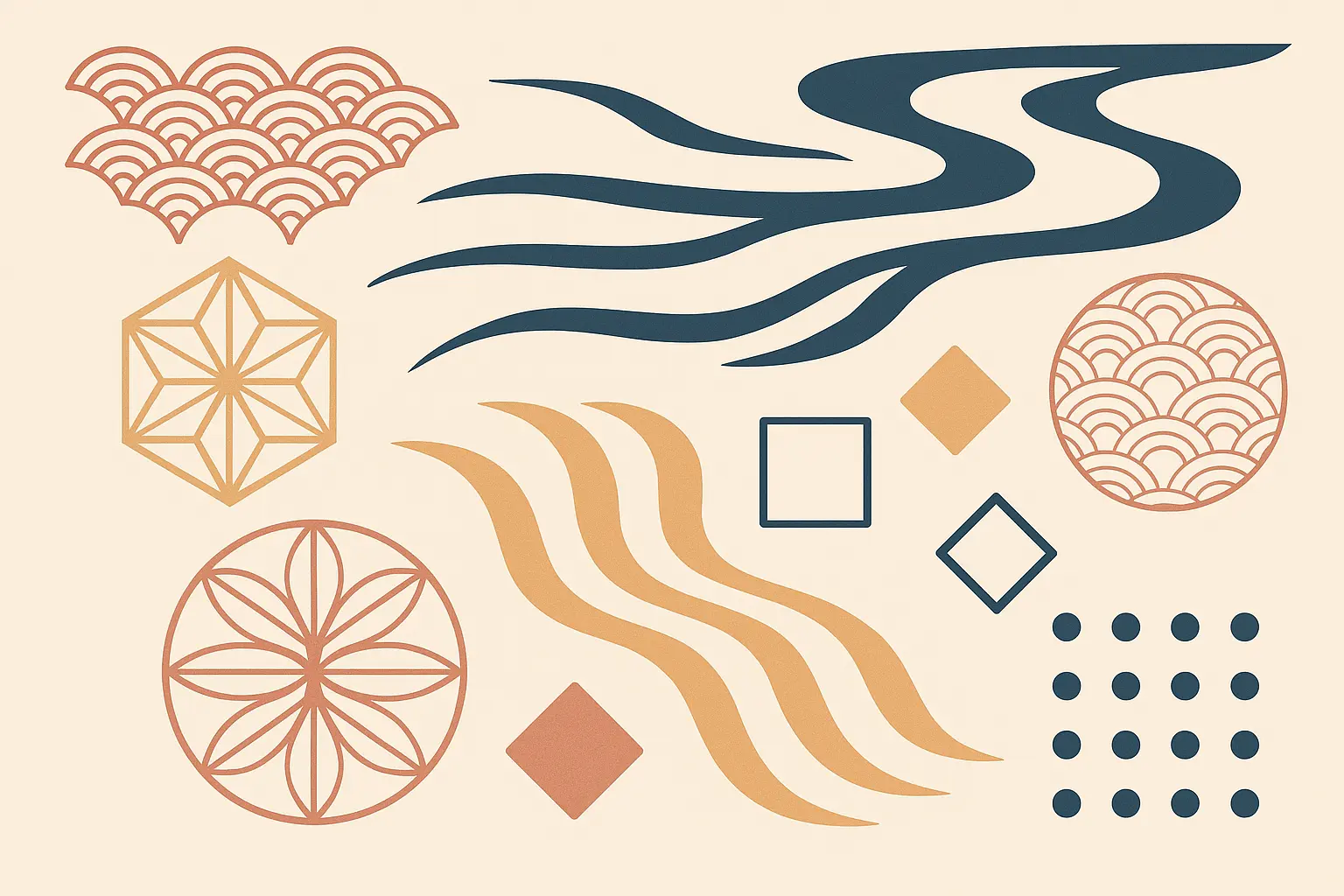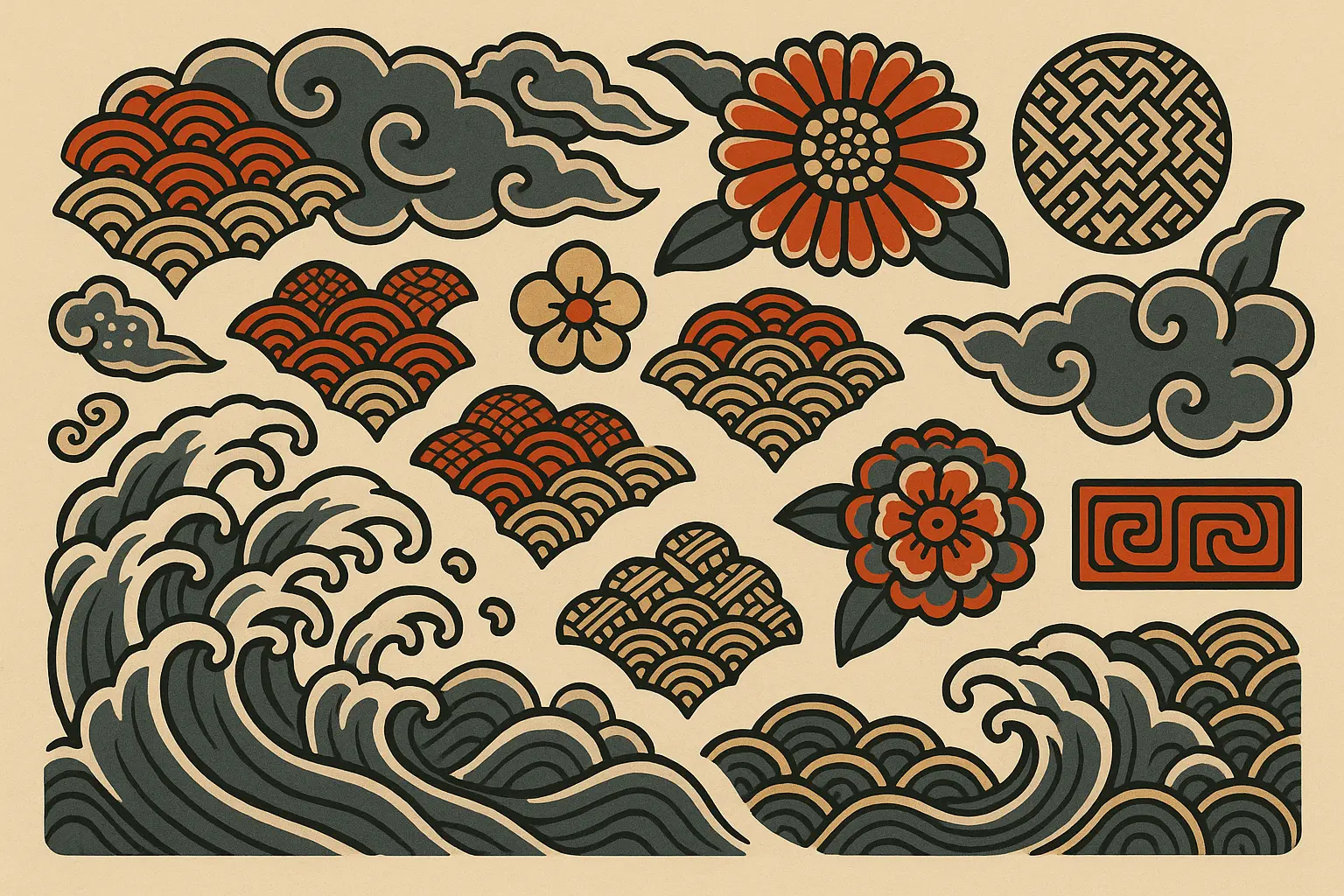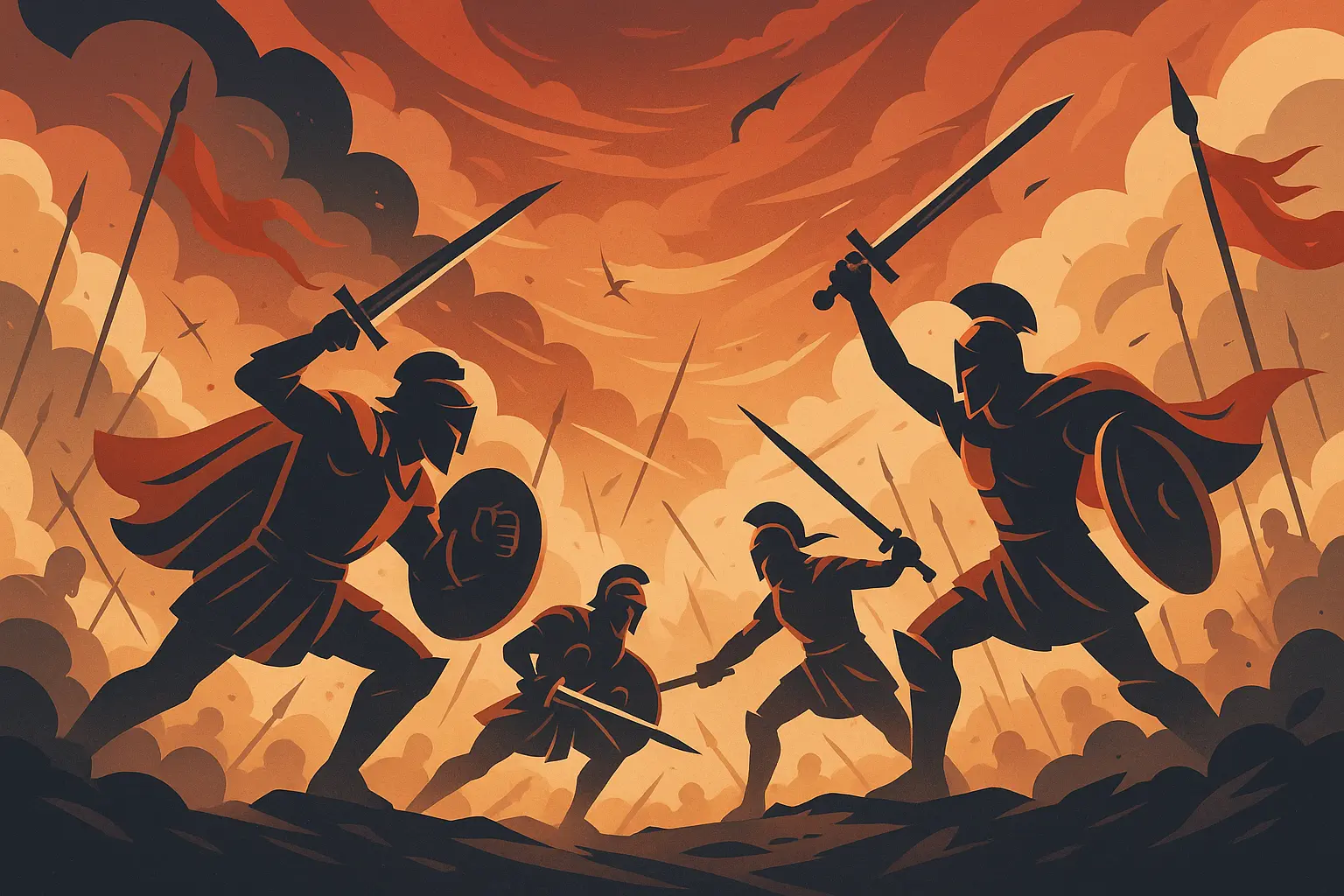25 Epic Zoro Tattoos That Will Make Every One Piece Fan Jealous
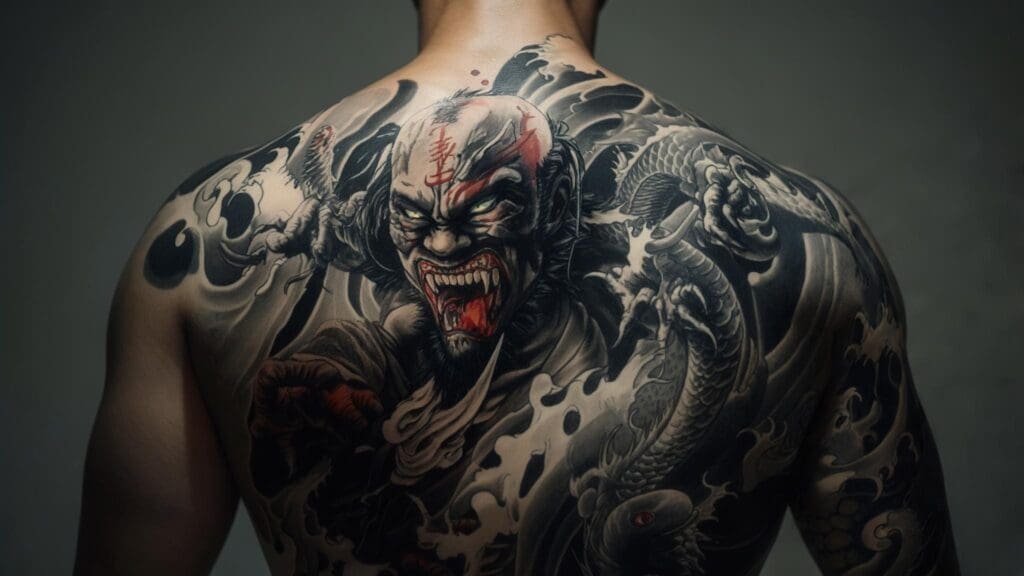
Look, if you’re here, you probably love Zoro as much as I do. Maybe you’ve been thinking about getting some ink to honor the guy who literally took on all of Luffy’s pain and just said “nothing happened.” Here are 25 tattoo ideas that’ll make other One Piece fans stop you on the street.
According to Anime Tattoos, “Roronoa Zoro is a character who embodies strength, loyalty, and an indomitable spirit. As a key member of the Straw Hat Pirates, Zoro’s relentless pursuit of becoming the world’s greatest swordsman has made him a fan favorite and a symbol of perseverance and honor.” I’ve been rewatching the Thriller Bark arc, and honestly, that “Nothing Happened” scene still gives me chills every single time. That moment perfectly captures why so many fans choose to permanently honor this legendary swordsman on their skin.
Your Zoro tattoo isn’t just about anime fandom – it’s about committing to the values that make this green-haired maniac one of fiction’s most respected warriors: dedication, sacrifice, and never giving up on your dreams.
Table of Contents
-
What You Need to Know Before Getting Zoro Inked
-
Minimalist & Small Zoro Designs (5 Designs)
-
Sword-Focused Masterpieces (5 Designs)
-
Character Portraits & Iconic Scenes (5 Designs)
-
Symbolic & Abstract Interpretations (5 Designs)
-
Traditional Japanese Style Tributes (3 Designs)
-
Back Pieces & Large Format Epics (2 Designs)
-
Real Talk About Living With Your Choice
-
How AI Can Help You Design the Perfect Tattoo
-
Final Thoughts
TL;DR
-
Think about five things before choosing: personal connection, where it goes, how complex it is, what style you want, and how big it needs to be
-
Simple designs work best if you need to keep things professional or it’s your first tattoo
-
Sword tattoos need artists who actually know how to draw weapons properly
-
Character portraits need to be at least 4×6 inches or the face details will look like mush
-
Traditional Japanese styles need bigger spaces and artists who know what they’re doing culturally
-
Big pieces cost serious money and take multiple sessions
-
Match your design to your actual lifestyle and job requirements
-
AI tools can help you figure out what you want and show your artist exactly what you’re thinking
What You Need to Know Before Getting Zoro Inked
Before you jump into getting Zoro tattooed on your body forever, let’s talk about the stuff that actually matters. I’ve seen too many people rush into anime tattoos and regret their choices later. Here are five things you absolutely need to figure out first.
Personal Connection & Meaning
Here’s the thing – your Zoro tattoo needs to mean something real to you. Don’t just pick something because it looks cool on Pinterest. What is it about this green-haired swordsman that actually speaks to you?
Maybe it’s his loyalty. Like, the dude literally absorbs all of Luffy’s pain and torture just to protect his captain. That’s next-level friendship right there. Or maybe you connect with his single-minded dedication to becoming the world’s greatest swordsman – that “I’ll achieve my dream or die trying” mentality hits different when you’re grinding toward your own goals.
I know a guy named Mike who got Zoro’s three swords after he started his own business. He told me that every time he wanted to quit during those brutal first years, he’d look at that tattoo and remember that mastery takes time. No shortcuts, no excuses. That’s the kind of personal connection that makes a tattoo meaningful for decades.
The “Nothing Happened” moment represents something deeper than just toughness – it’s about sacrifice without recognition. If you’re the type who puts others first or has ever endured hardship silently to protect people you care about, this scene probably hits you in the gut every time you see it.
Think about which of Zoro’s philosophies actually drives your daily decisions. His commitment to keeping his word, his willingness to endure pain for growth, or his ability to stay laser-focused despite distractions – these traits should guide what design elements you choose.
Placement Strategy & Visibility
Let’s be honest about where this thing’s going on your body. Your forearm is perfect for sword designs – it’s like your arm was made for it. The natural length fits katana proportions beautifully. Plus, you can roll up your sleeves to show it off or cover it up when your conservative relatives visit.
Understanding tattoo pain levels across different body areas helps you make smart placement decisions that you won’t regret later.
Back pieces are awesome if you want to go big, but remember – you’ll never actually see it unless you’re taking mirror selfies. And good luck explaining to dates why you need help applying sunscreen to your epic Zoro battle scene. Also, the spine area can be absolutely brutal pain-wise.
|
Placement Area |
Best Design Types |
Can Your Boss See It? |
How Much Will It Hurt? |
How Will It Age? |
|---|---|---|---|---|
|
Forearm |
Swords, text, portraits |
Easy to hide with sleeves |
Not too bad |
Stays looking good |
|
Back |
Big scenes, full compositions |
Nope, naturally hidden |
Pretty rough |
Very stable |
|
Shoulder |
Medium portraits, symbols |
Depends on your shirts |
Manageable |
Ages well |
|
Chest |
Personal meaningful pieces |
Hidden under clothes |
Ouch, especially near bone |
Stable with weight changes |
|
Ankle/Wrist |
Small simple designs |
Everyone can see |
Sensitive spots |
Might blur over time |
Think about your job too. Creative field? Go wild. Corporate lawyer? Maybe stick to places a suit can cover. I’m not saying it’s fair, but it’s reality. That promotion you’re eyeing might come with different expectations about professional appearance.
Design Complexity & Detail Level
Simple truth: the more detailed you go, the more it’s gonna hurt, cost, and potentially need touch-ups later. Those Instagram-worthy photorealistic portraits look incredible, but they require artists who charge $300+ per hour and multiple sessions that’ll test your pain tolerance.
Start simple if it’s your first tattoo. A clean Zoro silhouette or his three swords crossed will age beautifully and won’t break the bank. You can always add more elements later if you catch the tattoo bug.
Moderate complexity stuff includes detailed sword work, character portraits with shading, or small scene compositions. These need skilled artists who actually watch anime and understand the style, but they won’t require the extreme precision of photorealistic work.
High complexity is full-color portraits, elaborate battle scenes, or traditional Japanese sleeve work. Expect multiple sessions, serious money, and potential touch-ups every few years to keep things looking fresh.
Be honest about your pain tolerance. Complex designs mean sitting under the needle for hours at a time. Some people handle four-hour sessions like champs, while others prefer shorter appointments spread across multiple visits.
Style Consistency & Artistic Approach
Pick a lane and stick with it. Anime-accurate Zoro looks weird next to a realistic portrait of your dog. If you’re going for that authentic One Piece vibe, find an artist who actually watches anime and gets Oda’s distinctive style.
Check out different anime tattoo styles and approaches to figure out which aesthetic actually fits your vision.
Anime-accurate styles keep the original One Piece art look. This appeals to purists who want authentic character representation straight from Oda’s imagination. The vibrant colors and distinctive proportions need to be spot-on or it just looks like generic anime.
Realistic interpretations transform Zoro into photorealistic artwork. This requires exceptional artist skill but creates mind-blowing results that make people do double-takes. Expect higher costs and longer session times.
Traditional tattoo styling adapts Zoro into classic American or Japanese tattoo conventions. Bold lines, limited color palettes, and simplified forms create timeless designs that age like fine wine and work well with other traditional pieces.
Modern interpretations blend contemporary artistic techniques with Zoro’s character elements. These give you creative freedom while keeping recognizable traits that make it clearly Zoro.
Size & Scale Considerations
Size matters, especially for detail work. That intricate Zoro portrait you found on Pinterest? It needs to be at least 6 inches tall or those facial features will turn into a blob as it ages. Trust me on this one.
Large pieces let you include more detail and create stronger visual impact. Full sleeves or back pieces allow multiple story elements, elaborate backgrounds, or highly detailed character work. But they require substantial time and money commitments that’ll make your wallet cry.
Medium-sized tattoos (roughly 6-10 inches) offer good balance between detail and practicality. You can include recognizable character features, basic background elements, or simple scene compositions without overwhelming smaller body areas.
Small tattoos (under 4 inches) work best with simplified designs. Fine details disappear as tattoos age, so focus on strong shapes, clear silhouettes, or simple symbolic elements that’ll stay crisp for decades.
Also think about how your body might change over time. Areas that stretch significantly can distort detailed artwork. Stable areas like forearms and calves maintain proportions better long-term.
Minimalist & Small Zoro Designs
Perfect for people who want to rep Zoro without committing to a full sleeve or dealing with workplace drama. These designs work great for first tattoos or anyone who prefers subtle nods to the series.
1. Zoro Silhouette Portrait
Just his profile in solid black – that distinctive spiky hair, the bandana when he’s getting serious, those three earrings. It’s subtle but any One Piece fan will know exactly who it is. Great first tattoo because it’s simple, heals fast, and won’t cost you a fortune.
The clean black approach means no color touch-ups needed and it ages incredibly well. His strong facial features translate perfectly to silhouette work – that jawline, the bandana positioning, and those earrings create instantly recognizable shapes.
This works beautifully on forearms, calves, or shoulder blades. The simple execution means faster healing times and lower costs compared to detailed portraits. Plus, you can add small accent elements later if you want to expand it.
2. Three Swords Symbol
Three crossed lines representing his Santoryu style. Minimalist as hell but packed with meaning. You can make it tiny (like 2 inches) or bigger depending on where you put it. Works great on wrists, behind ears, or anywhere you want a subtle nod to the series.
The linear nature fits perfectly in narrow spaces and the symbolic meaning runs deep – representing dedication, skill, and taking an unconventional path to mastery. You can adjust the size from tiny to medium without losing clarity.
Consider making subtle differences between the three swords – maybe slight variations in hilt design that reference Wado Ichimonji, Sandai Kitetsu, and Enma specifically for extra detail that fellow fans will appreciate.
3. Zoro’s Earrings Design
Three little circles in a row. That’s it. Only true fans will get it, which makes it kind of special. Perfect for people who want the most low-key anime reference possible.
This is the ultimate subtle Zoro reference. Three simple circles arranged vertically that only One Piece fans will recognize. It’s perfect for discrete fandom expression that flies under most people’s radar.
Works anywhere – behind ears, on wrists, ankles, or even as part of larger compositions. The tiny scale means minimal pain and quick healing. Some people even get them done in actual gold ink for extra authenticity.
4. “Nothing Happened” Text
Two words that hit harder than any punch in the series. Get it in clean, readable font – none of that fancy script that’ll be illegible in 10 years. Forearm placement lets you read it whenever you need that reminder to tough it out.
These words carry incredible emotional weight for One Piece fans. They represent ultimate sacrifice, loyalty, and the strength to bear others’ pain without complaint. The phrase works in various script styles from elegant cursive to bold block letters.
Forearms provide perfect placement for readable text you can easily show or hide. Some people choose ribcage placement for a more personal reminder that stays close to your heart.
5. Zoro’s Bandana Outline
Simple curved lines that represent his “getting serious” mode. When Zoro ties that bandana on, you know someone’s about to get wrecked. The flowing shape works well with body curves and adapts to different placement areas.
The bandana represents his shift from casual to battle mode. It’s that moment when you know he’s done messing around and someone’s about to learn why he’s the future world’s greatest swordsman.
The organic, flowing lines work better than rigid geometric designs on various body contours. You might add subtle shading to suggest fabric folds, but keep it minimal – the power lies in simple recognition.
Sword-Focused Masterpieces
For people obsessed with Zoro’s weapons (and let’s be real, his swords are pretty badass). These designs celebrate his mastery through detailed weapon illustrations that require artists who actually know how to draw swords properly.
6. Wado Ichimonji Detailed Blade
This is Kuina’s sword, so it carries serious emotional weight beyond just looking cool. The white handle and circular guard (tsuba) need an artist who knows weapon anatomy. Don’t cheap out here – a poorly proportioned sword looks ridiculous and you’ll regret it forever.
Wado Ichimonji represents Zoro’s connection to his childhood promise and his drive to honor Kuina’s memory. The white ray skin wrapping, distinctive circular guard, and elegant proportions deserve detailed treatment that captures its significance.
Forearms work perfectly for full sword designs since the length matches natural arm proportions. Calf placement offers another solid option with good visibility. Consider adding subtle background elements like cherry blossom petals that reference the sword’s emotional history.
7. Three Swords Crossed Formation
All three of his legendary blades in one design. Each sword has unique characteristics – Wado Ichimonji’s white handle, Sandai Kitetsu’s cursed aura, and Enma’s flame properties. Make sure your artist does their homework because this isn’t just “three random katanas.”
This showcases Zoro’s complete arsenal evolution throughout the series. The different blade characteristics create visual variety within a unified composition – from Wado Ichimonji’s elegance to Enma’s dangerous power.
The crossed arrangement creates dynamic movement and tension. Think about the angle carefully – some formations suggest defensive positioning while others imply aggressive attack stances. Choose what reflects your connection to Zoro’s fighting philosophy.
8. Katana with Cherry Blossoms
Mixing the sword with traditional Japanese elements creates beautiful contrast. The pink petals soften the hard metal lines and add that “beauty and death” symbolism that samurai culture loves. Looks gorgeous but needs an artist skilled in both weapons and organic elements.
Cherry blossoms (sakura) represent life’s fleeting nature in Japanese culture – perfect symbolism for a swordsman’s path. The delicate petals create stunning contrast against metallic sword surfaces.
The organic flow of falling petals adds movement to rigid sword lines. This balance between hard and soft elements works well on curved body areas. The pink and white colors need skilled color work to stay vibrant over time.
9. Sword Through Bamboo
Shows precision and power – like those old samurai blade tests where they’d see how clean a cut they could make. The clean slice through multiple bamboo stalks suggests effortless strength, which is pure Zoro energy.
This references traditional sword testing methods that demonstrate both blade quality and swordsman skill. The vertical bamboo stalks create strong compositional lines that work well on arms, legs, or torso placements.
Green bamboo colors can tie into Zoro’s signature color scheme beautifully. The natural elements add organic texture that contrasts nicely with the sword’s manufactured precision.
10. Enma Flame Design
His newest and most dangerous sword surrounded by fire. This blade literally drains your life force if you can’t control it, so the flames represent both incredible power and serious danger. Great opportunity for dramatic colors and dynamic movement.
Enma’s reputation as a blade that can cut more than intended makes it one of the most feared swords in One Piece . The flame elements represent both its incredible power and the danger it poses to anyone who can’t master it.
Dynamic flame patterns create serious movement and energy around the sword’s form. These can range from realistic fire effects to stylized traditional Japanese flame motifs depending on your artistic preference.
The color opportunities are insane – deep purples and blacks for the blade contrasted with bright oranges, reds, and yellows for the flames. This dramatic contrast creates striking visual impact that demands attention.
Character Portraits & Iconic Scenes
Direct character representation for people who want Zoro himself, not just symbols. These capture different aspects of his personality and growth throughout the series.
11. Realistic Zoro Portrait
This is the holy grail but also the most expensive and risky option. You need an artist who specializes in photorealistic work and charges accordingly. Anything smaller than 6×8 inches won’t have enough detail space, and you’ll end up with a blurry mess.
Finding an artist skilled in portrait tattoo work is absolutely crucial for achieving the photorealistic quality this design demands.
Photorealistic portraits require the highest level of skill and technical precision. Every shadow, highlight, and texture must be perfect to achieve that lifelike quality that makes people stop and stare.
Black and gray often works better than color for realistic portraits because it focuses on form and shadow rather than potentially distracting color choices. Zoro’s strong facial structure translates beautifully to this approach.
12. Anime-Style Zoro Face
Staying true to Oda’s art style appeals to purists who want authentic One Piece artwork. The green hair, distinctive eye shape, and facial expressions need to be spot-on or it’ll just look like generic anime.
This isn’t just any anime style – it’s specifically Oda’s unique approach with particular proportions, line weights, and color choices that make One Piece characters instantly recognizable.
The vibrant green hair, characteristic eye shape, and expressions need careful attention to maintain authenticity. Small details make the difference between authentic One Piece art and generic anime.
13. Post-Timeskip Zoro Design
Features that massive scar and his matured appearance after the two-year training period. Shows character growth and the physical evidence of his dedication to getting stronger. That scar tells a story of intense training and sacrifice.
The timeskip design shows Zoro’s evolution both physically and mentally. That huge scar across his left eye represents the price of power and his willingness to sacrifice anything for strength.
His updated look – the long green coat, different sword positioning, and more mature facial structure – creates opportunities for detailed character work that shows progression rather than a static moment.
14. Zoro’s “Nothing Happened” Scene
The ultimate Zoro moment. Standing there bloodied but unbroken after absorbing all of Luffy’s pain from Bartholomew Kuma. This scene defines his character more than any fight or victory. Heavy emotional weight for fans who understand the context.
This represents peak Zoro – the moment that defines his character more than any battle. Standing there, covered in blood and exhausted, yet maintaining his composure when questioned about what happened.
The composition typically shows Zoro in that standing position, blood-covered, with that stoic expression that communicates both incredible pain and unshakeable determination. Background elements might include the crater or subtle Thriller Bark references.
15. Zoro in Fighting Stance
Dynamic action pose with all three swords ready to strike. Captures his combat intensity and unique Santoryu fighting style. Requires understanding of anatomy and movement to look convincing rather than awkward.
Action poses need solid understanding of anatomy, movement, and the specific mechanics of Zoro’s three-sword style. The pose should feel powerful and ready to explode into motion.
Dynamic elements like flowing clothes, energy effects, or environmental details help transform a static tattoo into something that feels alive and energetic.
Symbolic & Abstract Interpretations
For people who connect with Zoro’s philosophy rather than just his appearance. These move beyond literal representation to capture his values and character traits.
16. Bushido Code Elements
Traditional Japanese symbols representing the samurai values Zoro embodies throughout his journey. Appeals to fans who appreciate the deeper philosophical aspects of his character and traditional Japanese warrior culture.
The Bushido code’s seven virtues – rectitude, courage, benevolence, respect, honesty, honor, and loyalty – align perfectly with Zoro’s character development. Abstract representations create meaningful elements without requiring literal imagery.
This approach works well for fans who want deeper meaning than surface-level character representation. The symbolism stays relevant even as your relationship with the anime evolves.
17. Zoro’s Direction Compass
A broken compass celebrating his hilariously terrible sense of direction. Shows you appreciate his complete character – strengths and weaknesses together. Adds humor to what could otherwise be overly serious tattoo work.
Zoro’s directional challenges provide endless entertainment throughout One Piece. A broken compass, spinning wildly, or pointing in impossible directions captures this beloved character flaw perfectly.
Design variations might include multiple compass needles pointing different directions, a compass rose with Zoro’s silhouette in the center, or even a GPS device with error messages for a modern twist.
18. Oni Mask Tribute
Traditional demon mask representing his “Asura” technique and fierce fighting spirit. Connects his supernatural combat abilities with traditional Japanese folklore and authentic mask-making artistry.
Oni masks represent supernatural power and fierce protection in Japanese culture. Zoro’s “Asura” technique literally manifests demonic energy, making this symbolism particularly fitting.
Traditional oni designs offer rich detail opportunities – distinctive horn shapes, fierce expressions, and traditional color schemes. Red and black combinations create striking visual impact that commands attention.
19. Green Aura Energy Waves
Abstract flowing lines representing his spiritual energy and determination using dynamic, modern design elements. This interpretation captures his inner strength through contemporary artistic techniques.
Energy aura effects translate Zoro’s spiritual power into visual form. Flowing lines, wave patterns, and dynamic shapes represent the invisible forces that drive his incredible abilities.
Green color schemes connect directly to Zoro’s signature aesthetic while allowing creative interpretation of how spiritual energy might look. Different shades create depth and movement.
20. Scar Pattern Design
Turning his battle scars into decorative elements represents growth through adversity rather than hiding evidence of struggle. Appeals to people who’ve overcome challenges and see beauty in survival marks.
Zoro’s scars tell his journey’s story – each mark represents a lesson learned, battle survived, or moment of growth. Transforming these into decorative patterns creates deeply personal symbolism.
The linear nature creates interesting compositional possibilities that flow with body contours or form geometric patterns while maintaining meaningful connection to his character development.
Traditional Japanese Style Tributes
Authentic irezumi-style work that honors traditional Japanese tattoo culture while incorporating Zoro’s elements. These require artists experienced in traditional techniques and cultural understanding.
Understanding traditional Japanese tattoo designs helps appreciate the cultural significance behind these authentic approaches.
21. Irezumi-Style Zoro Sleeve
Full traditional sleeve incorporating Zoro with classic Japanese elements in authentic irezumi style. This is a major commitment – multiple sessions over months, serious money, and you need an artist trained in authentic techniques.
Traditional irezumi sleeves represent the pinnacle of Japanese tattoo artistry. Incorporating Zoro requires understanding proper composition, symbolic relationships, and authentic technique execution.
Classic elements like waves, clouds, flowers, or mythical creatures create meaningful backgrounds that enhance rather than compete with Zoro’s presence. The full sleeve commitment means this becomes a journey, not just a tattoo.
22. Zoro Ukiyo-e Woodblock Style
Mimicking traditional woodblock prints with bold outlines and flat colors. Bridges centuries of Japanese art with modern anime. Unique fusion that honors both historical medium and contemporary character.
Ukiyo-e prints have distinctive characteristics – bold outlines, flat color areas, and specific compositions that create instantly recognizable aesthetic qualities from historical Japanese art.
Adapting Zoro to this format requires understanding how traditional artists approached figure representation and color usage. It’s genuine artistic translation between time periods.
23. Samurai Armor Zoro
Zoro wearing traditional armor blends his character with historical warrior imagery. Incredible detail opportunities but requires cultural knowledge to execute respectfully and authentically.
Traditional samurai armor offers amazing detail possibilities – layered plates, distinctive helmet designs, and family crests that personalize each suit while maintaining historical accuracy.
Combining Zoro’s recognizable features with authentic armor creates interesting visual tension between anime character and historical reality while honoring both elements.
Back Pieces & Large Format Epics
Maximum commitment, maximum impact. These comprehensive designs offer unlimited creative possibilities but demand experienced artists, multiple sessions, and serious financial investment.
Consider tattoo cost factors when planning these extensive pieces that require substantial investment.
24. Epic Battle Scene Back Piece
Full back canvas showing Zoro in combat with detailed backgrounds and multiple elements. This is tattoo endgame – expensive, time-consuming, but absolutely stunning when done right. Plan for multiple sessions and deep pockets.
Back pieces offer the largest canvas available for complex compositions including multiple characters, detailed backgrounds, and elaborate environmental elements that smaller tattoos can’t accommodate.
Battle scenes need understanding of dynamic composition, character interaction, and environmental storytelling while balancing multiple focal points within overall visual coherence.
25. Zoro’s Journey Timeline
Showing his evolution throughout the series from East Blue to current adventures. Chronicles his complete character development in one comprehensive piece. The ultimate fan tribute that captures his entire growth arc.
Timeline pieces tell complete stories across available canvas space. This can show Zoro’s physical evolution, major battles, significant relationships, and key character moments in one cohesive artwork.
The compositional challenge involves organizing multiple time periods into visually coherent design while maintaining overall unity through flowing elements or consistent artistic treatment.
Real Talk About Living With Your Choice
Let’s get honest about the practical stuff that affects your daily life with a Zoro tattoo. This isn’t just about looking cool – it’s about making smart decisions you’ll still be happy with decades from now.
Professional Considerations
Your career path heavily influences tattoo decisions. Conservative industries still maintain strict appearance policies requiring easily concealed placement, while creative fields often embrace visible artwork as personality expression.
Think about your advancement goals carefully. That promotion you’re targeting might come with client-facing responsibilities or different workplace expectations about professional appearance standards.
Creative fields usually see tattoos as cultural fit indicators and creative thinking evidence. Some companies actually prefer candidates who express individuality through body art.
Maintenance Commitment
Simple black work ages gracefully and rarely needs touch-ups unless you abuse it with sun exposure or poor aftercare. Color work might need refreshing every 5-10 years depending on your skin type and lifestyle.
Proper tattoo aftercare ensures your Zoro tattoo maintains quality and appearance throughout healing and beyond.
|
Design Complexity |
What You’ll Pay |
How Many Sessions |
Touch-Up Timeline |
How It Ages |
|---|---|---|---|---|
|
Simple/Minimalist |
$200-$800 |
1-2 sessions |
Rarely needed |
Looks great forever |
|
Moderate Detail |
$800-$2,500 |
2-4 sessions |
5-10 years |
Good with proper care |
|
High Complexity |
$2,500-$8,000+ |
4-12 sessions |
3-7 years |
Needs regular maintenance |
|
Full Sleeve/Back |
$5,000-$15,000+ |
8-20 sessions |
3-5 years |
Ongoing relationship |
Detailed portraits or complex shading might need periodic touch-ups to maintain crisp details as your skin naturally changes over time. This ongoing relationship with your tattoo artist becomes part of the experience.
Personal Growth Alignment
Choose elements that’ll stay meaningful as you evolve personally. Zoro’s core values – dedication, loyalty, perseverance – tend to remain relevant through major life changes rather than becoming embarrassing reminders of temporary interests.
Life experiences often deepen appreciation for Zoro’s character traits. Career challenges, relationship tests, or personal obstacles can make his philosophy more meaningful rather than less relevant over time.
Consider how your relationship with One Piece might change. While specific plot details might fade in importance, the character values that initially drew you to Zoro typically maintain significance.
Budget Planning
Quality anime tattoos need specialized skills that command premium pricing. Artists experienced with manga artwork, traditional Japanese techniques, or photorealistic portraits charge higher rates than general tattoo artists.
Large pieces require multiple sessions spread across months. Budget for the full project cost upfront rather than hoping to afford continuation sessions later. Incomplete tattoos rarely look intentional.
Research artists thoroughly before committing. Travel costs for the right artist often prove worthwhile compared to settling for local options without relevant experience.
|
Artist Type |
Hourly Rate |
Booking Wait |
What You Need in Their Portfolio |
|---|---|---|---|
|
General Tattoo Artist |
$100-$200/hour |
2-6 weeks |
Basic tattoo work |
|
Anime/Manga Specialist |
$150-$300/hour |
1-4 months |
Proven anime artwork |
|
Traditional Japanese |
$200-$400/hour |
3-12 months |
Authentic irezumi training |
|
Photorealistic Portrait |
$250-$500/hour |
6-18 months |
Museum-quality realism |
How AI Can Help You Design the Perfect Tattoo
Advanced AI technology eliminates those frustrating communication gaps between what you’re picturing and what your tattoo artist understands. No more disappointing results because you couldn’t explain your vision properly.
Check out AI tattoo generators to understand how technology revolutionizes the design process for complex character tattoos.
Creating your perfect Zoro tattoo becomes way easier with AI-powered design assistance. Traditional consultations often involve miscommunication between your vision and the artist’s interpretation, leading to disappointing results or expensive revisions.
Instant Design Visualization lets you experiment with multiple variations before committing to permanent ink. Generate different artistic approaches, test various element combinations, and preview how design components work together.
Style Exploration helps you understand differences between anime accuracy, realistic interpretation, and traditional Japanese styling. The AI recognizes nuanced distinctions, helping you find the perfect balance for your aesthetic preferences.
Placement Optimization shows how your chosen design looks on different body areas, helps you understand size requirements for detail retention, and generates placement guides for your tattoo artist.
Professional Artist Communication creates detailed reference materials that clearly communicate your vision, reducing consultation time and ensuring accurate execution of your intended design.
Whether you’re planning minimalist Zoro symbolism or an elaborate traditional Japanese sleeve, AI tools provide everything needed to transform your ideas into stunning, personalized designs that capture the essence of the future world’s greatest swordsman.
Final Thoughts
Your Zoro tattoo represents more than just anime fandom – it’s about committing to the values that make this green-haired swordsman one of fiction’s most respected warriors. His unwavering dedication, loyalty to his crew, and relentless pursuit of becoming the world’s greatest swordsman resonate with fans who see these qualities as guideposts for their own lives.
The 25 designs here cover everything from subtle minimalist tributes to elaborate traditional Japanese masterpieces. Each category serves different needs: simple designs for professional discretion, sword-focused pieces for martial arts enthusiasts, character portraits for direct representation, symbolic interpretations for philosophical connection, traditional styles for cultural appreciation, and large format pieces for comprehensive storytelling. Remember that the best Zoro tattoo authentically represents your personal connection to the character. Whether you’re drawn to his “Nothing Happened” sacrifice, his three-sword fighting style, or his journey from bounty hunter to Straw Hat pirate, choose elements that’ll continue inspiring you throughout your own life journey.
The technical stuff outlined in this guide – from placement strategy to aging characteristics – ensures your tattoo will look as impressive decades from now as it does on day one. Quality execution requires finding an artist experienced with anime artwork or traditional Japanese techniques, depending on your chosen style.
As tattoo technology continues evolving with AI-assisted design tools, the process of creating your perfect Zoro tattoo becomes more accessible and precise. These technologies bridge the gap between your vision and the final artwork, ensuring clear communication with your chosen artist and professional-quality results.
Your Zoro tattoo will serve as a daily reminder of the dedication required to achieve your dreams, just as Zoro’s relentless training drives him toward becoming the world’s greatest swordsman. Choose a design that honors both the character’s legacy and your personal growth journey.
